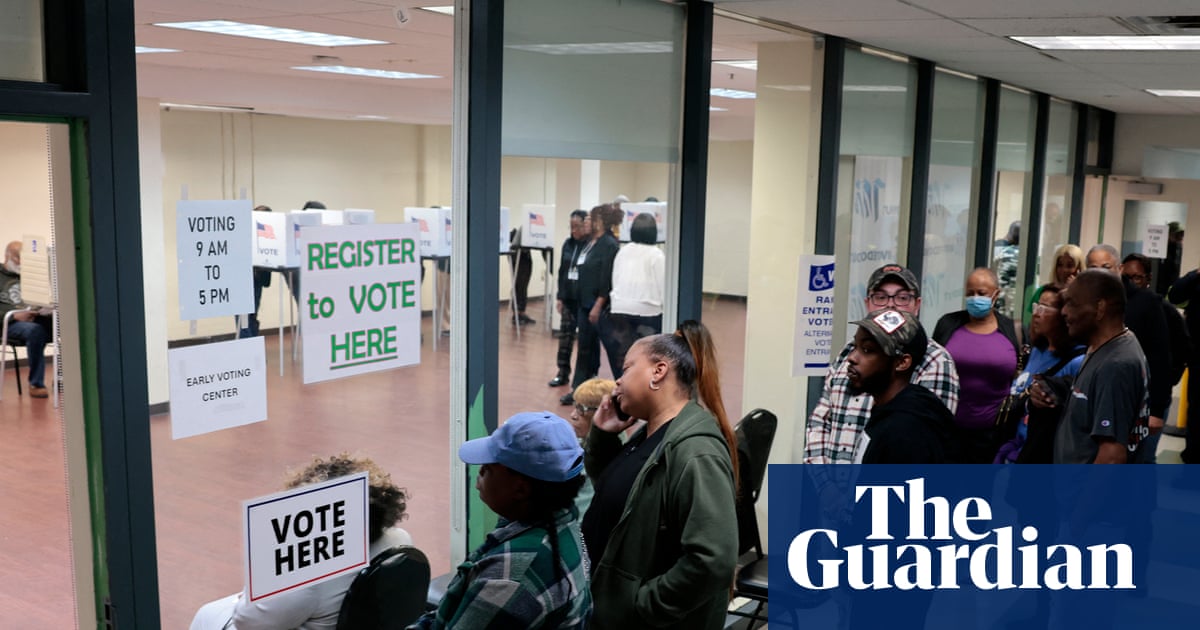First came Texas, then California, then Missouri. President Donald Trump’s call to redraw U.S. House districts ahead of the 2026 elections has led to a wave of political maneuvering among state-level Republicans and Democrats that continues to unfold across the country.
Politicians are reshaping congressional voting districts — a task typically done just once a decade, after each census — in an effort to give their parties' candidates an edge in next year's elections. The stakes are high because Democrats need to gain just three seats to wrest control of the House from Republicans, who are trying to buck a historical pattern of the president's party losing seats in midterm elections.
The redistricting efforts have triggered protests, petition drives, ad campaigns and lawsuits.
Here's what to know about the redistricting battle.
Missouri activists push for referendum on new US House map
Missouri became the latest state to take action when the Republican-led Legislature last week brushed aside Democratic objections and passed new U.S. House districts aimed at helping Republicans win seven of the state's eight districts, one more than they currently hold. Republicans are targeting Democratic Rep. Emanuel Cleaver by shifting portions of his Kansas City district into neighboring ones and stretching the remainder into rural Republican areas.
Republican Gov. Mike Kehoe has said he will sign the measure into law soon. Opponents already have begun gathering petition signatures seeking to force a statewide referendum on the new map. They have until Dec. 11 to submit around 110,000 valid signatures, which would put the map on hold until a public vote.
A referendum normally would occur in November 2026 — too late to use the districts in that same election. But state lawmakers could set an earlier referendum, potentially coinciding with April 7 municipal elections.
The new map already faces several lawsuits. One brought by the NAACP contends no “extraordinary occasion” existed for Kehoe to call lawmakers into session for redistricting. Two others brought by voters contend mid-decade redistricting isn't allowed under the Missouri Constitution.
California ballot measure attracts big-money campaigns
Californians are seeing a steady stream of TV and mail ads aimed at undecided voters in advance of a Nov. 4 referendum on new U.S. House districts. The proposal, backed by Democratic Gov. Gavin Newsom and Democratic state lawmakers, is intended to help Democrats win five additional seats in California to offset Trump’s moves in Texas to try to gain five Republican districts.
In one TV ad from Newsom, a narrator intones: “Save democracy.” Newsom has largely presented the election as a referendum on Trump — who is widely unpopular in the state outside of his loyal conservative base — while avoiding technical discussions about reshaping districts. Teachers, nurses and other labor groups have been among the largest donors to Newsom’s committee.
Opponents of the proposal, known as Proposition 50, warn in a rival ad that it represents “a direct attack on democracy” that would undercut the work of an independent commission previously approved by voters. The opposition campaign has received more than $30 million from Republican donor Charles Munger Jr., who also had spent tens of millions to support the original ballot initiative giving redistricting power to the independent commission. Former Republican Gov. Arnold Schwarzenegger has spoken out against the revised districts.
Staging the statewide election is projected to cost taxpayers roughly $280 million.
Texas delegation to Congress will have some new faces
The new Texas congressional map, passed by the Republican-led Legislature, quickly drew federal lawsuits and set off jockeying among both Democrats trying to hang on to their seats and Republicans trying to get to Congress.
The NAACP, Mexican American Legal Defense and Educational Fund and the League of United Latin American Citizens have all asked a federal court to block the new map as discriminatory against minority voters. A hearing is scheduled to begin Oct. 1 on whether the districts are legal and can go into effect.
The political fallout has been swift. Democrat Rep. Lloyd Doggett, 78, of Austin chose to retire after three decades in the House rather than face a primary against 36-year-old two-term Rep. Greg Casar, chair of the Congressional Progressive Caucus. Casar’s current district has been redrawn to favor Republicans.
In Houston, longtime Democratic Rep. Al Green has said he intends to run next year but hasn't said whether he will do so in his current redrawn district that now favors Republicans or try to move to a new, majority-Black district that currently lacks an incumbent.
In the Dallas area, Democratic Reps. Jasmine Crockett, Marc Veasey and Julie Johnson’s current districts are being squeezed into two.
More states could redraw US House districts in coming months
Pressure from Trump to redraw House districts has been mounting on Indiana Republicans. Gov. Mike Braun, a Republican, said Tuesday that a legislative session on redistricting probably will happen, and it could come as soon as November.
Ohio and Utah also could have new congressional maps by then.
A Utah judge last month struck down the House districts adopted after the 2020 census because the Republican-led Legislature circumvented an independent redistricting commission established by voters. The Legislature faces a Sept. 25 target to release a new proposal for public comment, with a final vote expected in October and court approval of a new map in November.
Ohio’s constitution requires new House districts because the ones adopted after the 2020 census didn’t have sufficient bipartisan support. If bipartisan consensus remains elusive, Republican lawmakers in November could adopt revised districts without need of any Democratic votes.
Elected leaders in other states also are considering mid-decade redistricting, including Republicans in Florida and Kansas and Democrats in Maryland and New York.
New gerrymandering could disrupt national political equilibrium
The push to redraw districts for partisan advantage — a process known as gerrymandering — is unfolding during a time of unusual political balance in Congress.
The 220-215 House majority that Republicans won over Democrats in the 2024 elections aligns almost perfectly with the share of the vote the two parties received in districts across the U.S., according to a recent Associated Press analysis.
Although Democrats and Republicans each benefited from the way districts were drawn in particular states, those advantages essentially canceled each other out. When adding results from all states, the AP’s analysis showed that Democrats nationwide won just a fraction of a seat more than expected last year. Because congressional seats aren’t allotted by fractions, the net result was that each party’s share of House seats corresponded with their share of the votes.

 German (DE)
German (DE)  English (US)
English (US)  Spanish (ES)
Spanish (ES)  French (FR)
French (FR)  Hindi (IN)
Hindi (IN)  Italian (IT)
Italian (IT)  Russian (RU)
Russian (RU) 























Comments